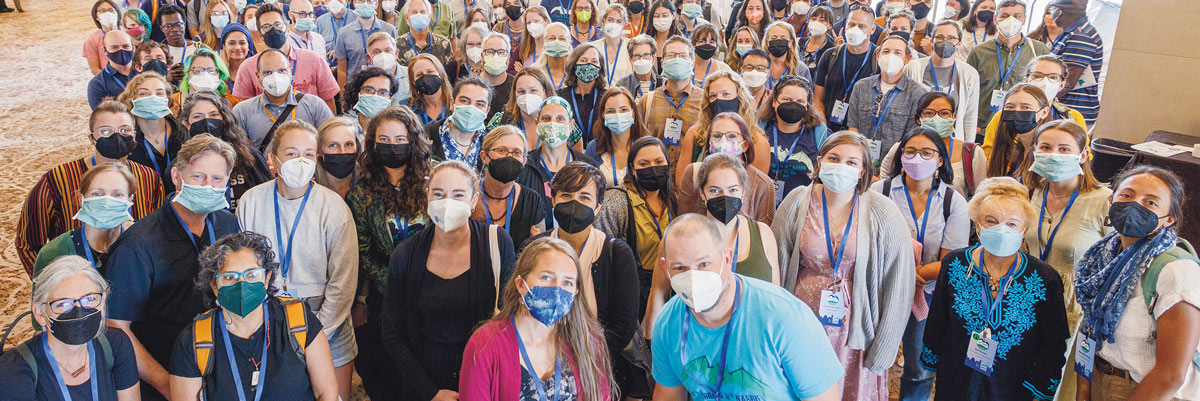
Bat Scientists Unite

bat scientist.
“It was a fantastic meeting and really special for everybody to be back together after three years,” says Bat Conservation International’s (BCI’s) Chief Scientist Dr. Winifred Frick. “The bat science community is an inclusive and tight community. NASBR has always been an annual event where people can come together to share research and support students.”
During the event, Dr. Frick received the Thomas H. Kunz Recognition Award for exemplary contributions by an early or mid-career bat scientist. Dr. Frick studied under Kunz, who passed away in 2020. He was her postdoctoral mentor and a key figure in the bat world.
The event’s Austin location allowed for several field excursions, including trips to Bracken Cave, Austin Bat Refuge, and Big Bend National Park. It also featured a wide variety of talks and workshops, including a day of student talks by early career scientists, including BCI student scholars. Working sessions and collaborations were also a key part of the event, and BCI staff members led workshops and symposia, and over a dozen presented their research in talks and poster sessions.
Presentations included BCI’s Director of Bats and Wind Program Michael Whitby’s talk on “Wind Energy Fatality Minimization Efforts and Research in the United States,” and posters ranged from BCI Fat Bat Project Coordinator Sarah Stankavich’s poster, “Fat bats at the bug buffet,” to BCI Research
Scientist Dr. Luz de Wit’s poster on “Expanding the North American monitoring program to monitor bat health in the COVID-19 era.” BCI Acoustic Data Specialist Christen Long shared her work on acoustic monitoring of bats in south-central New Mexico, and BCI Agave Restoration Program Manager Dr. Kristen Lear shared her poster, “Recognizing the importance of community livelihoods in advancing conservation measures for endangered pollinating bats.” BCI Endangered Species Interventions Director Dr. Jon Flanders gave a presentation called “Overcoming the Challenges and Constraints of Conducting Long-term Acoustic Monitoring Projects in Remote Locations,” in a session Dr. Frick co-chaired.
“It was really exciting to reflect on how much BCI has grown and the presence that we had in terms of participating with the scientific community,” Dr. Frick says.
BCI also hosted this year’s Diversity in Science Breakfast, which Dr. Frick has helped organize for years. “It is dedicated time to come together as a community to talk about how we work to build a more inclusive, equitable, and just world, particularly related to diversifying bat science and STEM,” she says.